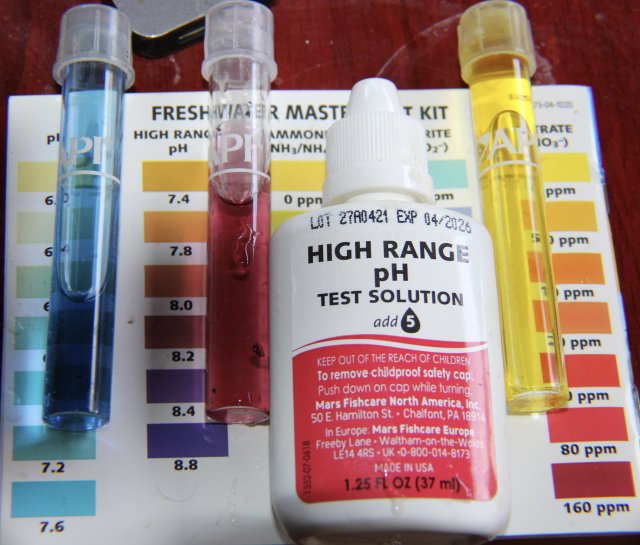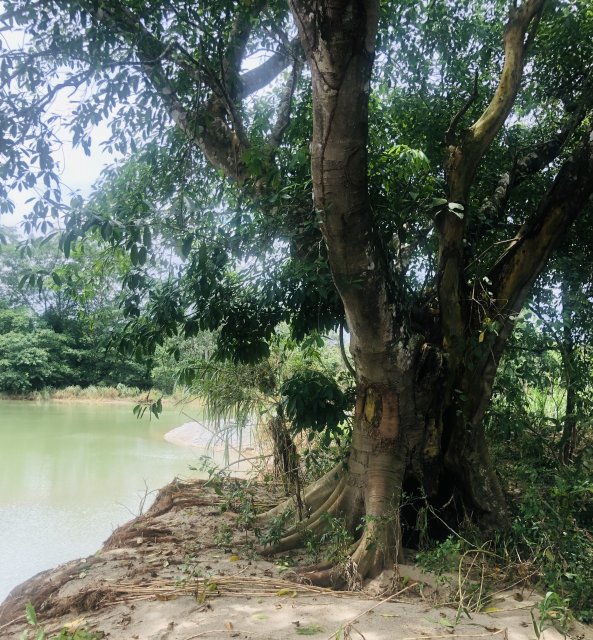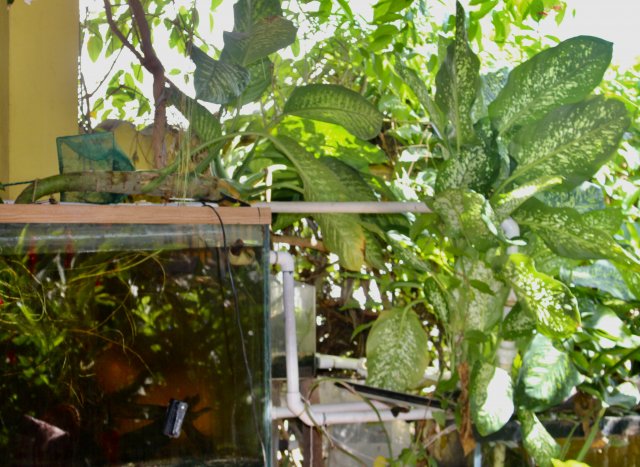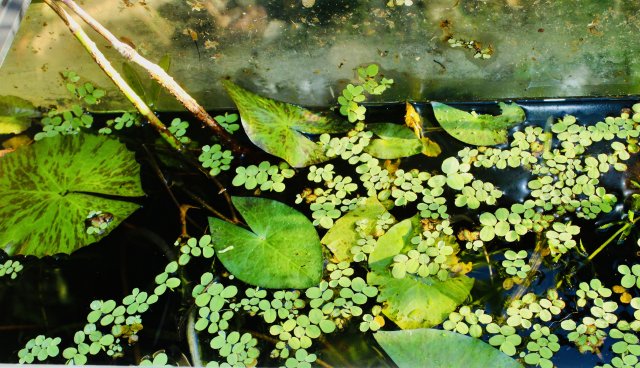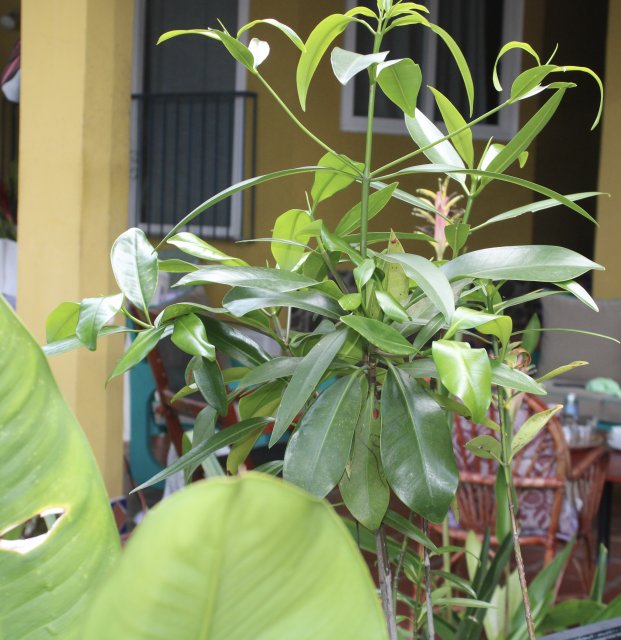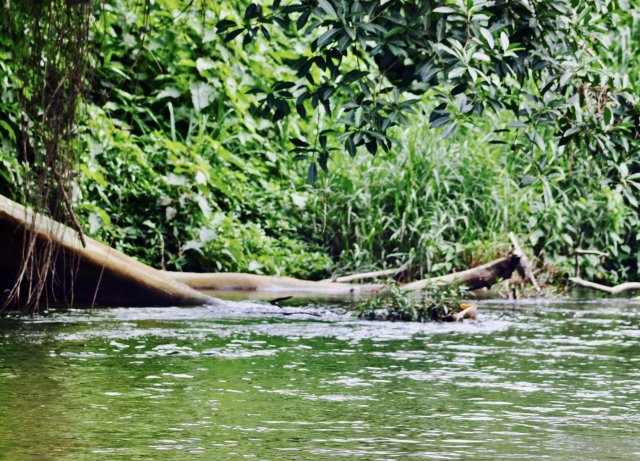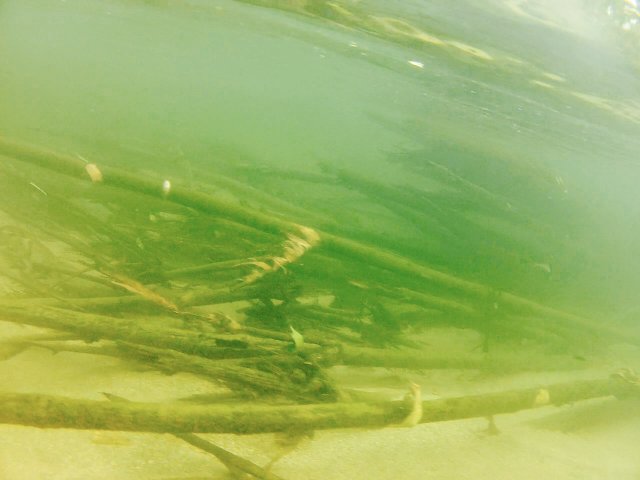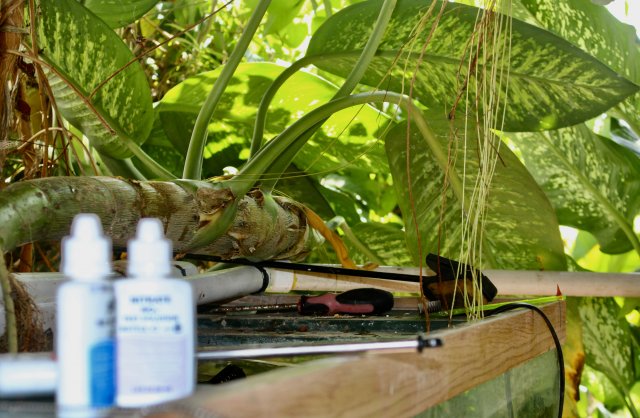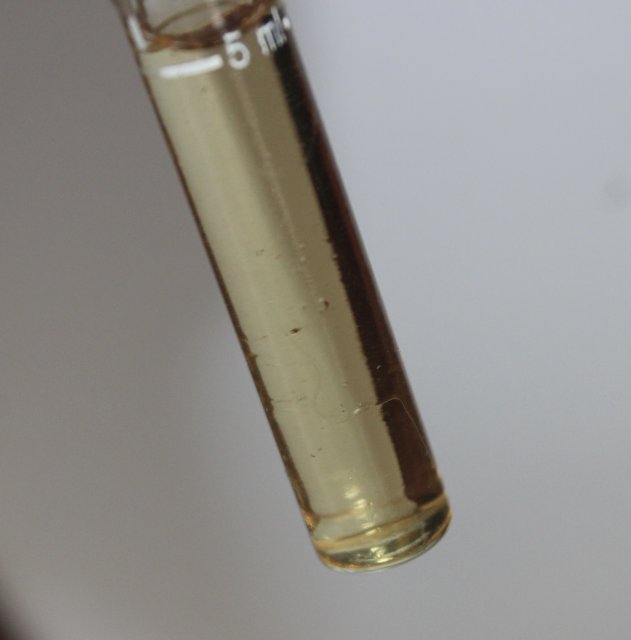I have a 210 gallon new world cichlid tank. I've had to perform 30% water changes every 2-3 days to keep nitrates below 20ppm. I tried to control nitrate rise using a floating up-flow algae scrubber, which never seemed to have any real impact, and I even weighed the amount of food I feed the tank to make sure I wasn't over feeding.
I know this isn't news to anyone more experienced, but I've never had live plants in any tank and with Oscars, a pike, and five silver dollars, I didn't think plants would work in this tank. My first attempt to use plants involved submerging about 20 stalks of luck bamboo in the tank with the roots in the gravel. While visually interesting, this didn't yield any noticeable benefit and the fish did eat and uproot the plants constantly. I also realize complete submersion of lucky bamboo is not consider OK by a lot of people. Judging by the lack of effect on the nitrates, I'd say the bamboo wasn't growing much while fully submerged.
My latest attempt was to install lucky bamboo along the back of the tank with just the roots in the water, and some small LED grow lights above them, like this:

ONE DAY after doing this nitrates dropped to between 5-10ppm and have stayed there for over a week. I run the grow lights for about 12 hours a day. They aren't particularly powerful, just 5 watts each.
I have not had to change any water for a week+. Probably not exciting to others but as a first time plant user, it's amazing to me that 22 stalks of lucky bamboo has reduced my water usage and maintenance by an enormous amount. We'll see how long they last.
The holders for the lucky bamboo are made by Poth-o-carry and they fit the rim of the 210 perfectly. So easy to use. I'm still amazed.
I know this isn't news to anyone more experienced, but I've never had live plants in any tank and with Oscars, a pike, and five silver dollars, I didn't think plants would work in this tank. My first attempt to use plants involved submerging about 20 stalks of luck bamboo in the tank with the roots in the gravel. While visually interesting, this didn't yield any noticeable benefit and the fish did eat and uproot the plants constantly. I also realize complete submersion of lucky bamboo is not consider OK by a lot of people. Judging by the lack of effect on the nitrates, I'd say the bamboo wasn't growing much while fully submerged.
My latest attempt was to install lucky bamboo along the back of the tank with just the roots in the water, and some small LED grow lights above them, like this:

ONE DAY after doing this nitrates dropped to between 5-10ppm and have stayed there for over a week. I run the grow lights for about 12 hours a day. They aren't particularly powerful, just 5 watts each.
I have not had to change any water for a week+. Probably not exciting to others but as a first time plant user, it's amazing to me that 22 stalks of lucky bamboo has reduced my water usage and maintenance by an enormous amount. We'll see how long they last.
The holders for the lucky bamboo are made by Poth-o-carry and they fit the rim of the 210 perfectly. So easy to use. I'm still amazed.



